From what I know, transmitting current over long(er) distances is more efficient using AC.
That's true if you can step up the voltage. In the case of the trolleybus the wires are energised at the "end-user" voltage, 600 V. Note that the overhead will be broken up into isolated sections and these will be fed from the nearest trolleybus substation. The feed to the substation will probably be at somewhere in the region of 25 - 100 kV (AC) depending on the nation grid standard voltages. In this manner losses are kept low as the 600 V DC sections are reasonably short.
What is the reasoning of using DC for power transmission in this case?
- Constant power. DC is always on. AC is in pulses.
- A more balanced three-phase load on the substation. A polyphase rectifier is used and one phase is always supplying power.
- Possibility of easily regenerating into the line while braking.
- For a given insulator breakdown voltage DC allows transmission of more power.

Figure 1. Three-phase to DC conversion loads the 3-phase supply in a more balanced way. A single phase AC supply would provide a pulsing load to the supply. Image source: Electronics Tutorials.
Is DC power transmission in this case more efficient (no heavy power converters inside the vehicle; cheaper to produce DC motors; more efficient DC motors etc.), safer for the pedestrians, or just legacy?
Probably a combination of all of the above except for pedestrian safety. DC has the problem that switching is more difficult as there is no zero-cross where the current drops to zero to help extinguish switching arcs.
From the comments:
"Note that the overhead will be broken up into isolated sections and these will be fed from the nearest trolleybus substation." That looks like an argument for AC transmission again. Less substations to be maintained along the way.
The substations are required for sectional circuit-breakers in any case so there wouldn't be much of a saving. They also allow for redundancy in the case of a substation failure where the one each side can supply power to the dead section (by bridging out the sections) although there will be some voltage drop as a result.
I guess this made sense in the early days of trolleybuses, but nowadays with the availability of cheap electronic components I am wondering if there isn't a stronger argument for AC power transmission.
You're still missing the benefit of the more balanced loading of the three-phase system, regeneration and cost of high-voltage insulation of the network.
